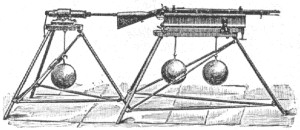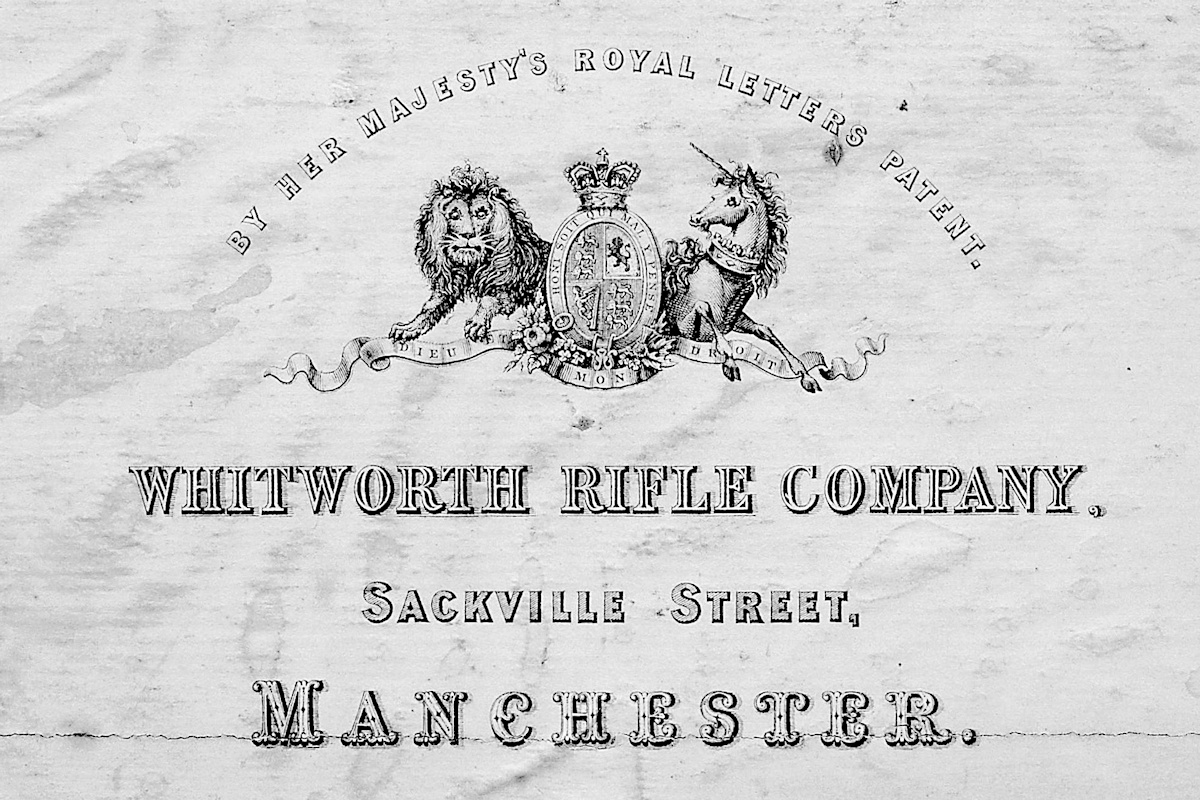Introduction > Target Shooting > Dominance Wanes
During the late 1850’s there was growing apprehension as to the prospects of French invasion of Great Britain. This culminated in 1859 with the Government issuing a circular authorising Lords Lieutenant to raise Volunteer corps. There was an immediate rush of Volunteering, but it was not expected to last. Measures to secure the long-term prospects for the Volunteers were, however, put in place late in 1859 with the formation of the National Rifle Association (NRA), its aims including “the encouragement of Volunteer Rifle Corps and the promotion of rifle shooting throughout Great Britain.”

The first prize meeting of the NRA was held on Wimbledon common, where it was to remain an annual event until 1890 when it moved to the new ranges at Bisley. Queen Victoria fired the inaugural shot at the first rifle meeting on 2 July 1860. A Whitworth muzzle-loading rifle placed in a mechanical rest had been aligned with a target at a distance of 400 yards. Joseph Whitworth handed a silken cord attached to the trigger to Her Majesty and the rifle was discharged by a slight pull on the cord. The adjustment was so accurate that the bullet struck the target within 1.25 inches from the centre.
The Queen further offered encouragement by founding an annual prize that Volunteers competed for in two stages; the first at 300, 500 and 600 yards, and the second at 800, 900 and 1,000 yards. The first stage was shot using the long Enfield, this, however, was deemed of insufficient accuracy for the second stage. Trials were held at Hythe in May 1860 to select a suitable rifle. Joseph Whitworth and a deputation of Birmingham gun makers contested the trials, with the Whitworth rifle being the clear winner. With one exception (1865 when a Rigby rifle was issued), the Whitworth rifle continued to be issued to Queen’s Prize finalists until 1871, when for the first time the match was shot throughout with breech-loaders. The Snider replaced the Enfield in the first stage, and the War Office made a special issue of Martini-Henry’s for the second stage.
Following the principles established by Whitworth, gun makers developed a special class of ‘small-bore’ target rifle. The majority of these rifles were around .451 calibre, and the term ‘small-bore’ was used to distinguish them from the ‘large-bore’ service rifle of .577 calibre. Captain Heaton, in his 1864 ‘Notes on Rifle Shooting’ describes a number of small-bore rifles: Baker, Beasley, Bissell, Crockart, Edge, Henry, Kerr, Lancaster, Newton, Parsons, Rigby, Turner and Whitworth. These are just a few of the gunmakers connected with the history of the small-bore rifle.

Although Volunteers using the service arm of issue carried out much of the shooting, other matches permitted the use of any rifle and were open to all-comers. It was here that the small-bore rifle came to the fore. Rifles used in these competitions evolved, during the decade of the 1860’s, from variations of the military pattern to specialised items not suitable for military use.
Whitworth’s military match rifle was introduced late in 1859 and this is the form used in the Queen’s Prize final.
The classic form of the full match rifle was introduced by Whitworth by 1863. The full length military stock had reduced to a half stock (incorporating a ‘pistol grip’) and the ramrod was no longer attached to the rifle stock. These features allowed more weight to be concentrated in the barrel (the overall weight limit of the rifle being restricted to 10lb for NRA competitions). Open sights had been replaced with aperture sights taking interchangeable elements, and incorporating a spirit level to eliminate cant.
By the mid-1860s other gunmakers had developed rifling systems to rival Whitworth’s, and his dominance on the rifle range was to wane.

A Whitworth full match rifle with associated accessories.
Rifle courtesy: Dr. Ron Dillon
Photograph by: Fred Stutzenberger
